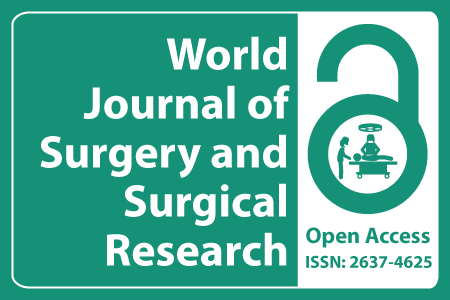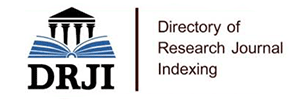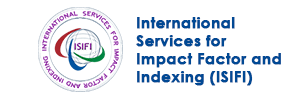
Journal Basic Info
- Impact Factor: 1.989**
- H-Index: 6
- ISSN: 2637-4625
- DOI: 10.25107/2637-4625
Major Scope
- Minimal Invasive Surgery
- Surgical Oncology
- Cardiac Surgery
- Trauma Surgery
- Gynecological Surgery
- Otolaryngology & ENT Surgery
- Urological Surgery
- Endocrine Surgery
Abstract
Citation: World J Surg Surg Res. 2023;6(1):1445.DOI: 10.25107/2637-4625.1445
Stand-Alone Left Atrial Appendage Excision via a Thoracoscopic Approach for Secondary Stroke Prevention in NV Afib Patients
Hamzah AW, Gu JX, Liu H, Cai YP, Du JJ and Shao YF
Department of Cardiovascular Surgery, The First Affiliated Hospital of Nanjing Medical University, China
*Correspondance to: Yong-Feng Shao
PDF Full Text Research Article | Open Access
Abstract:
Objectives: To determine the efficacy of thoracoscopic stand-alone left atrial appendectomy for stroke prevention in nonvalvular atrial fibrillation.
Background: It is suggested that left atrial appendectomy provided a potential alternative to oral anticoagulation as against AF-induced stroke prevention.
Methods: Consecutive participants were enrolled at the First Affiliated Hospital of Nanjing Medical University between January 2015 and December 2021 who had nonvalvular AF as well as a history of stroke or a systemic thromboembolic event using an endoscopic cutter, the left atrial appendage were thoracoscopically resected.
Results: Thirty-six patients (23 male, median age, 67 years) were finally included with a median AF duration of 60.0 (IQR 24.0-120.0) months. Patients had a median CHADS2 score of 3.0 (IQR 2.0-3.0), CHA2DS2-VASC score of 4.0 (3.0-4.0), and HAS-BLED score of 3.0 (2.0-4.0), respectively. A previous stroke or transient ischemic attack had occurred in 26 (72.2%) of the patients, and hemiplegia had occurred in 12 (33.3%) of the patients. Twenty patients had a history of bleeding and were not eligible for anticoagulation treatment, while 15 had received warfarin as an anticoagulant. There was a median follow-up time of 40.2 (IQR 33.0-50.2) months. Eighteen individuals had brain computed tomography and/or MRI at follow-up. Eight individuals only underwent anti-platelet medications; the remaining patients all avoided re-anticoagulation. At 6 months and 18 months of follow-up, there were 2 deaths as a result of cerebral hemorrhage incidents.
Conclusion: Thoracoscopic stand-alone appendectomy is an effective and safe technique for nonvalvular atrial fibrillation patients, which offered satisfactory mid-term prophylaxis without using anticoagulation therapy.
Keywords:
Left Atrial Appendectomy; Atrial Fibrillation; Thoracoscopy; Thromboembolic stroke
Cite the Article:
Hamzah AW, Gu JX, Liu H, Cai YP, Du JJ , Shao YF. Stand-Alone Left Atrial Appendage Excision via a Thoracoscopic Approach for Secondary Stroke Prevention in NV Afib Patients. World J Surg Surgical Res. 2023; 6: 1445..













